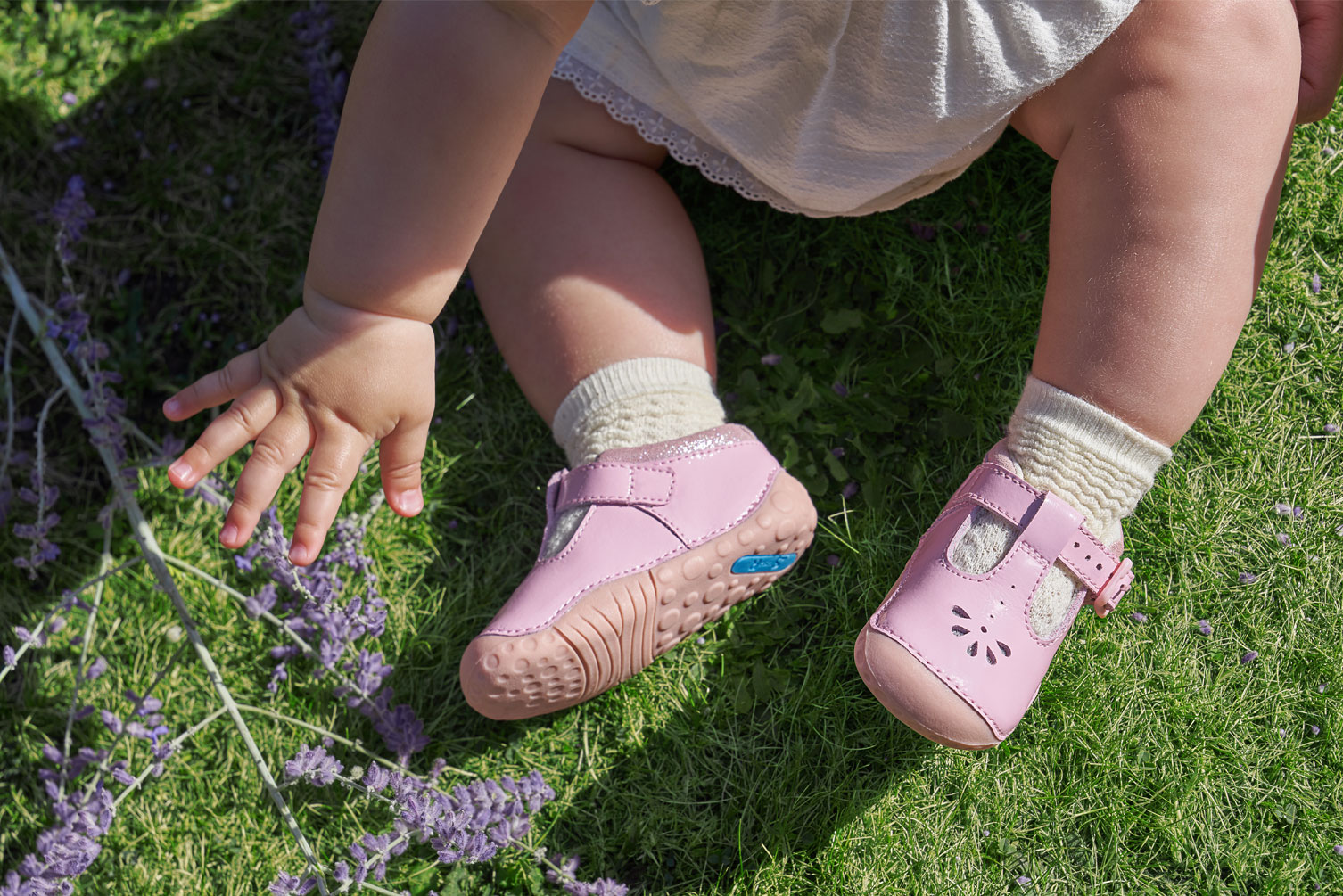
Baby feet are one of life’s pleasures. Super soft due to the extra padding and cartilage they are born with, these podgy bundles are magnets for parent, sibling and grandparent kisses. Aside from their cuteness, baby feet perform an incredibly important function and that is to send signals to the brain to assist with balance, co-ordination and developing our muscles. This is the reason that foot experts say, ‘barefoot is best’. Barefoot enables a baby to explore the vertical world in a natural way and it also protects the soft cartilage from being misshapen. Until the bones start forming, shoes and socks can affect the soft cartilage. Our foot bones don’t mature until between the ages of 16-21, so wearing fitted footwear throughout our childhood is very important to protect how our feet and their surrounding structures can develop and function.
Babies should wear shoes when they start to explore outside on two feet. They must be barefoot as they are taking their first tentative steps, pulling up to stand and cruising around the house from furniture to furniture. At this point the foot must have experience of the floor, it must learn about weight bearing and develop the ability to push off to form a step. Every step requires precision from a variety of systems and strain gauges within and surrounding the foot, so the brain needs to understand clearly what is happening and the process should not be interfered with by shoes.
When little ones want to explore the outside it’s important that they are wearing shoes, to protect their soft padded feet from the terrain beneath. In fact, the soft pads under our feet don’t start to disappear until we are around the age of four to six years old. At this point of early steps, the bones in the feet are going through ossification, but ligaments still haven't fully formed, so little feet are still soft and vulnerable. The shoes must allow natural movement with the right level of support and protection. The sole must be highly malleable but strong enough to withstand punctures from stones.
If the front of the shoe is stiff and rigid then the toes can become stiff because they can’t move properly. If that happens the little one might roll their foot inwards to help them move forwards and this can harm the bones and joints above. Start-Rite First Walking Shoes are proudly designed for how little people walk with the softest leather, ultra-flexible and cushioned insoles, padded ankles and scuff-proof heel and toe bumpers. Our shoes allow little feet to perform naturally as an important part of the locomotor system.
Quality-fitted footwear will last the duration your toddler needs them. Reinforced with scuff-proof bumpers, they are protected from the exploring bumps, jumps and ‘stomping’ that a young child will put them through. It’s important to think of shoes not just as an item of clothing, but as fundamental to supporting your child’s natural development, and in these early years your child is developing at pace!
When your toddler has grown out of their shoes, which can happen every six to eight weeks as they take their first steps, there are a variety of options available to recycle or reuse.
Many parents choose to keep their child’s first pair of shoes as a memento of these precious first months and their gorgeous little feet. Baby feet should be measured every six to eights weeks and it’s vital that a young child is not wearing shoes that are too small, as this can affect how their bones develop and how their brain interprets how the body is functioning. If shoes are too small and they hinder how a child walks, the brain can compensate for what it thinks the foot can’t do and this can cause difficulty for the child as it develops.
In this short time frame, and with soft cartilage, it is unlikely that a small child will misshape or mould the shoes to their foot shape. So, with first shoes you might want to consider contributing to the circular economy by selling them through a re-sell website, recycling them through Shoe Aid boxes found in selected Start-Rite retailers, or renting from thelittleloop.
Author: Vista, published 19-04-2023.